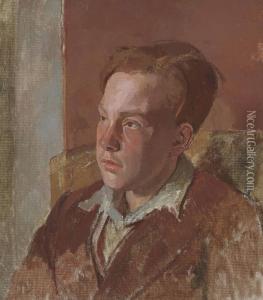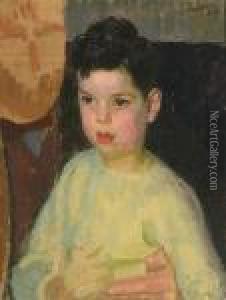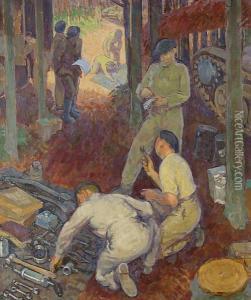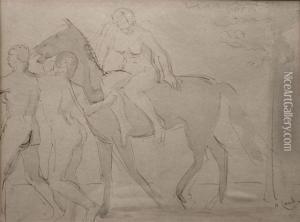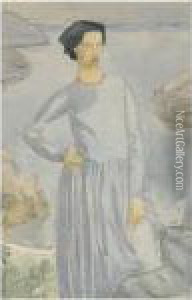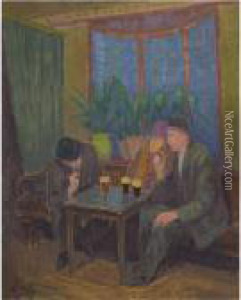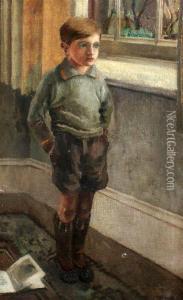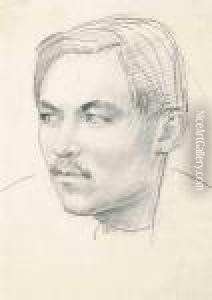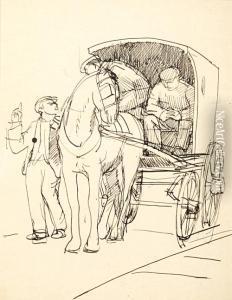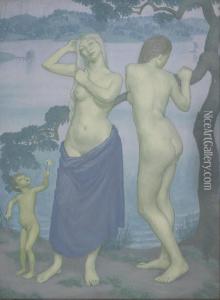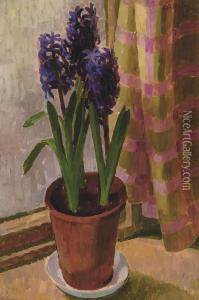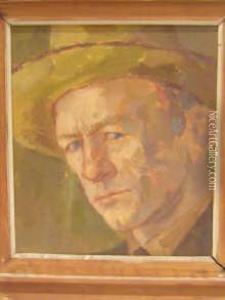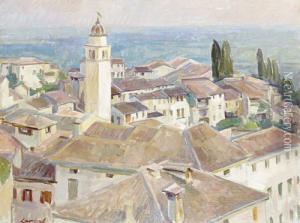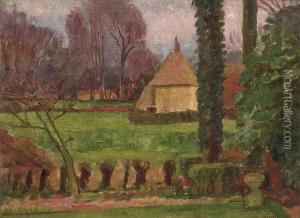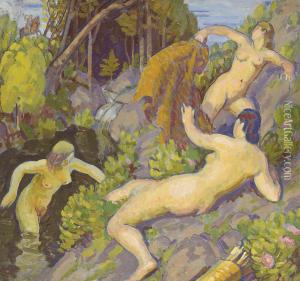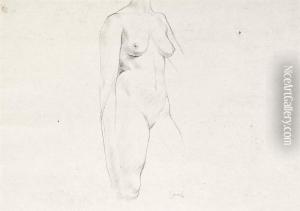Henry Lamb Paintings
Henry Lamb was an Australian-born British painter, known for his portraits and figure paintings, as well as his distinct contribution to the British school of art in the early to mid-20th century. Born on June 21, 1883, in Adelaide, South Australia, Lamb moved to England with his family in the 1890s, where he later pursued his education in medicine at Manchester University. His passion for art, however, led him to abandon his medical studies and instead, he turned his focus towards painting. Lamb studied art at the Académie de La Palette in Paris, where he was influenced by the works of artists such as Édouard Vuillard and Pierre Bonnard, as well as the broader Post-Impressionist movement.
Lamb's early works were characterized by their vivid portrayal of characters and scenes, often capturing the essence of his subjects with a unique sensitivity and psychological depth. He served in both World War I and World War II, experiences that deeply impacted his work, imbuing it with a sense of realism and poignancy that reflected the human condition amidst turmoil and conflict. During the First World War, he served as a medical officer, and his experiences provided material for a number of his later paintings, which depicted the harsh realities of war with a poignant and compassionate lens.
In the inter-war period, Lamb became a prominent figure in the Bloomsbury Group, a circle of intellectuals, writers, and artists in London, though he was known to maintain a certain distance from the core of the group. His work during this time continued to evolve, marked by a shift towards a more nuanced and introspective approach to portraiture. Lamb was particularly admired for his ability to capture the inner life of his sitters, a skill that earned him considerable recognition, including being commissioned to paint several notable figures of his time.
After World War II, Lamb's work gained further recognition, culminating in his election as an Associate of the Royal Academy in 1940 and later as a full Royal Academician in 1949. His later years were spent in both England and Ireland, where he continued to paint until his death on October 8, 1960. Lamb's legacy is that of a painter who traversed the realms of portraiture and figure painting with a profound sensitivity and an acute awareness of the human condition. His works are held in numerous public collections, including the Tate Gallery and the Imperial War Museum in London.
